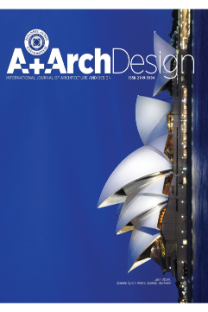COHERENT NARRATIVE OF FORMALISM IN ARCHITECTURE AND CLARIFYING ITS RELATIONSHIP TO THE CONCEPT OF FORM
COHERENT NARRATIVE OF FORMALISM IN ARCHITECTURE AND CLARIFYING ITS RELATIONSHIP TO THE CONCEPT OF FORM
The concept of form is one of the most essential aspects of contemporary architectural discourse. Additionally, there is a school of thought and approach to architecture known as formalism, which focuses primarily on the form of work while paying little attention to other aspects of architecture, such as functionality, structure, social considerations, and cultural influences. The form is the central concept in formalist thinking. However, the multiple meanings of the word "form" and the lack of consistent research into formalism's origins and philosophical roots make it challenging to understand the relationship between formalist thinking and the concept of form in architecture. This research aims to explore formalism in the epistemological field of architecture. By examining the idea of formalism in architecture, we will determine the specific understanding of form that this idea entails. We will discuss formalism as an idea put forth by scholars, critics, and theorists who have been involved in the study and critique of architecture. To achieve this, we will refer to historical and theoretical sources and architectural criticism that has addressed the question of formalism and form in architecture. Formalist thinking in architecture has its roots in the artistic formalism movement. Over time, it has evolved and been enriched by various theories and teachings, significantly impacting the perspectives of theorists, critics, and architectural professionals. In this article, we distinguish three types of formalism. First, formalism is a mode of thought among scholars who have approached architecture and architectural knowledge from a formalist perspective. Second, formalism is a method used in the analysis of architectural works. Third, formalism is a method employed in the design of architectural works.
Keywords:
Form, formalism, architectural formalism concept of form,
___
- Anay, H. (2012). (Epistemological) formalism and its influence on architecture: A Concise review.
- Tatarkiewicz, W. (2012). A history of six ideas: An essay in aesthetics (Vol. 5). Springer Science & Business Media. P :51- 60
- Forty, A., & Forty, A. (2000). Words and buildings: A vocabulary of modern architecture (Vol. 268). London: Thames & Hudson.
- Herbart, J. F. (2002). Johann Friedrich Herbart:(1776-1841). Schneider-Verlag Hohengehren.
- Wolfflin, H., & Selzer, M. (1976). Prolegomena to a Psychology of Architecture (Doctoral dissertation, Munich University).
- Göller, A. (1873). What Is the Cause of Perpetual Style Change? Empathy, Form, and Space: Problems in German Aesthetics, 1893, P.198
- Hays, K. M. (1984). Critical architecture: Between culture and form. Perspecta, 21, 15-29.
- Kaji-O’Grady, S. (2013). Formalism and Forms of Practice. The SAGE Handbook of Architectural Theory, 152-164. Dziemidok, B. (1993). Artistic formalism: Its achievements and weaknesses. The Journal of Aesthetics and art criticism, 51(2), 185-193.
- Colquhoun, A. (1980). Rationalism: a philosophical concept in architecture. Modernity and the Classical Tradition: Architectural Essays, 1987.
- Wittkower, Rudolf. 1949. Architectural Principles in the Age of Humanism, London: The Warburg Institute, University of London,
- Deamer, Peggy. “Structuring Surfaces: The Legacy of the Whites,” in Perspecta, Vol. 32, Resurfacing Modernism (2001), pp. 90-99.
- Rowe, C. (1982). The mathematics of the ideal villa and other essays. MIT press.
- Eisenman, P. (1963). The formal basis of modern architecture.
- Corbo, S. (2014). From formalism to weak form: the architecture and philosophy of Peter Eisenman. Ashgate Publishing, Ltd.
- Colquhoun, A. (1972). Historicism and the Limits of Semiology. Essays in Architectural Criticism.
- De Zurko, E. R. (1957). Alberti's theory of form and function. The Art Bulletin, 39(2), 142-145.
- Crysler, G., Heynen, H., & Cairns, S. (2011). The SAGE Handbook of architectural theory. The SAGE Handbook of Architectural Theory, 1-776.
- Hitchcock, H. R., & Johnson, P. (1995). The international style. WW Norton & Company.
- Hegel, G. W. F. (1835). Lectures on aesthetics. Heinrich Gustav Hotho, Berlin, 1.
- Behne, A. (1996). The modern functional building. Getty Research Institute.
- Hendrix, J. S. (2013). The contradiction between form and function in architecture. Routledge.
- ISSN: 2149-5904
- Başlangıç: 2015
- Yayıncı: İstanbul Aydın Üniversitesi
